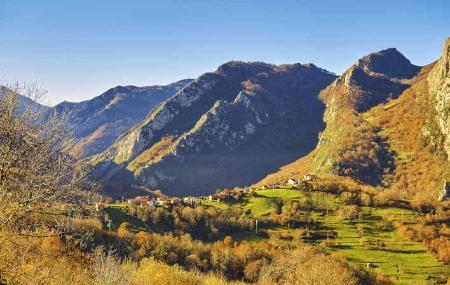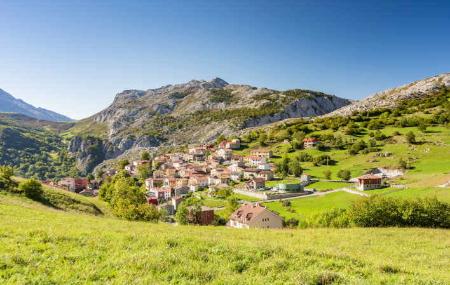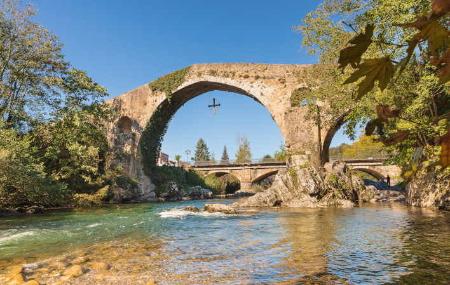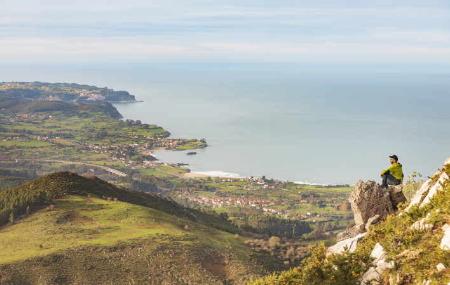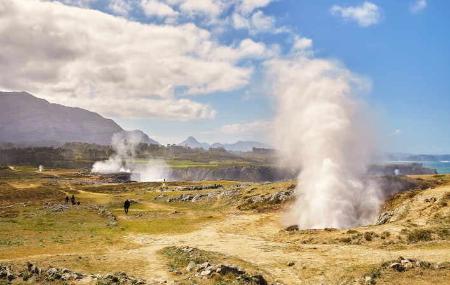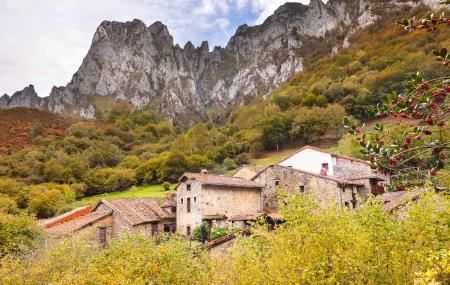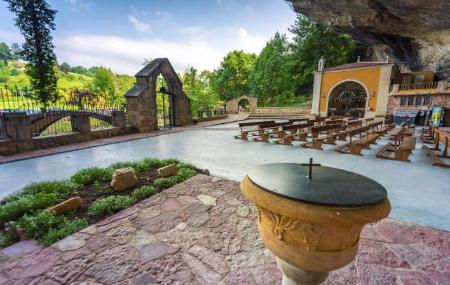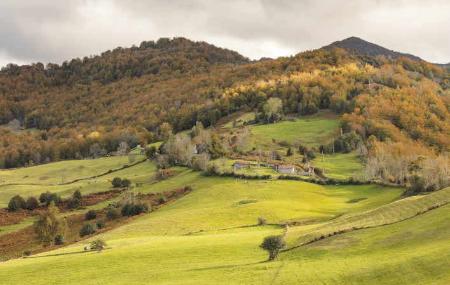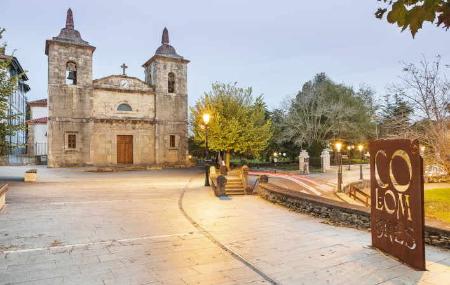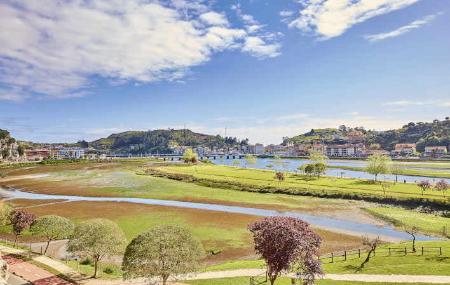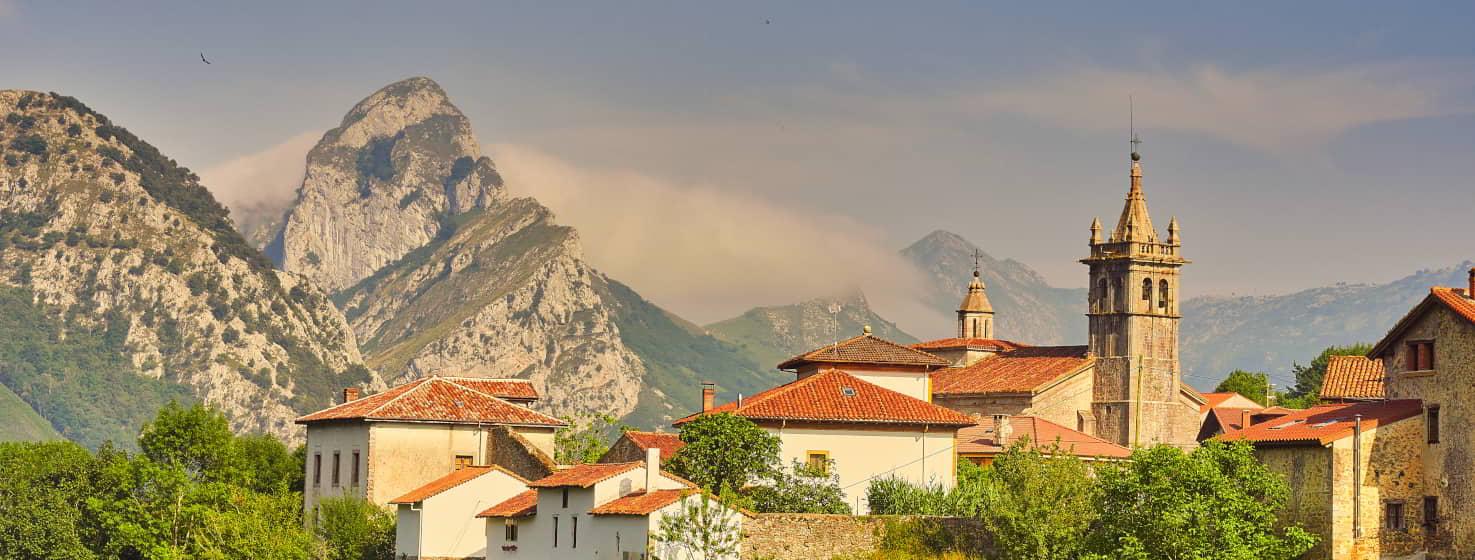
Eastern Asturias
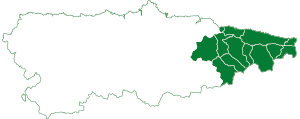
It is one of the best known regions of the Principality, and not by chance: it combines sea and mountains, villages with a seafaring flavour, fairytale hamlets and hamlets. Covadonga as the soul. The Picos de Europa always hinting at us and beaches that appear without warning, as if they were following in our footsteps. Everything is so full of charm that it needs to be explored in great detail. But it is not a scenery. Here life is simmering, with very good gastronomy and people who don't need a marketing manual to be hospitable.
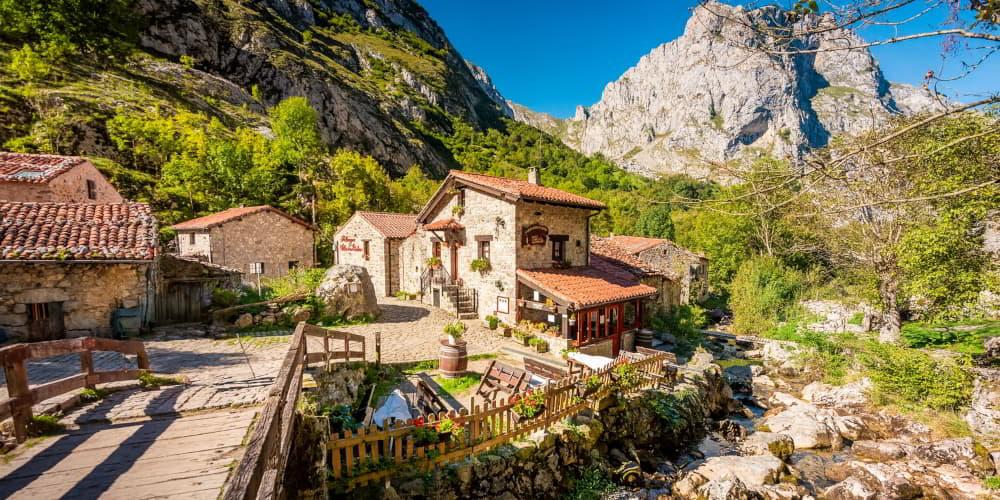
Traditions and heritage of Eastern Asturias
The roots of Eastern Asturias are as deep as those of the chestnut trees that shade its caleyas (rural roads). Layers of overlapping history where all kinds of footprints have been left, starting with those of the dinosaurs, which enjoyed this region 150 million years ago.
Jurassic and prehistory
The coastal strip that runs from Ribadesella to Caravia -and which extends as far as Gijón- is a Natural Monument for its exceptional ichnite deposits. In Avín, in the council of Onís, we can visit a musealised cavern that brings back to life the glacial fauna that lived in the area. At that time, some 40,000 years ago, Asturias was a frozen tundra where woolly rhinoceroses, cave bears or the thirteen Neanderthals who were trapped in the Sidrón Cave (municipality of Piloña) and who have made it possible to decipher part of the genome of this extinct species. The eastern region is also rich in cave sanctuaries: Tito Bustillo (Ribadesella), El Pindal (Ribadedeva), Covaciella (Cabrales), La Loja (Peñamellera Baja) and El Buxu (Cangas de Onís). The first three have the UNESCO World Heritage designation for their valuable paintings and engravings: bison, deer, horses, vulvas, anthropomorphs and cryptic signs from the mists of time. In Puertas de Vidiago (Llanes), the idol of Peña Tú was tattooed in the open air on a mysterious rock; a cardinal point of the Neolithic period in Asturias and a magnificent vantage point on the Llanes coast.
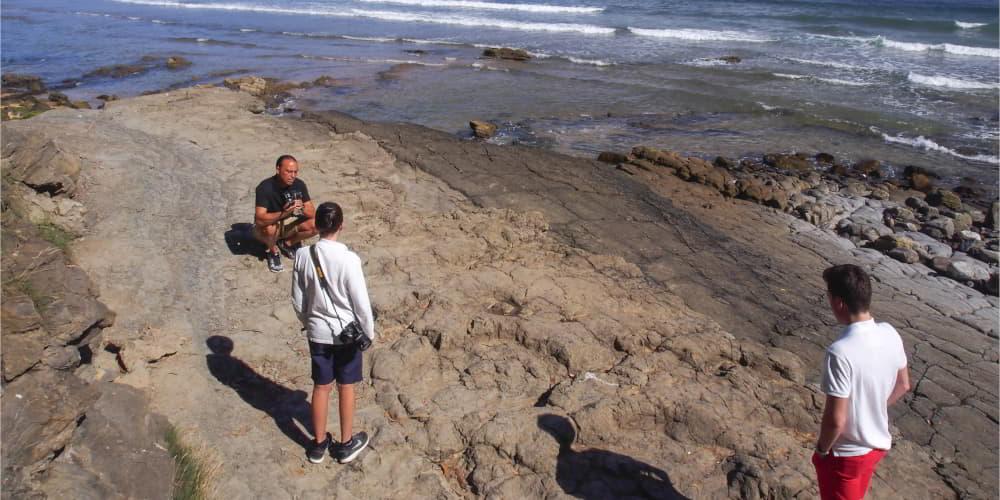
Covadonga and the first Asturian monarchy
Cantabrians and Asturians had already fought together against Roman legions, and since then the independent spirit of the eastern Asturians has been confirmed on different occasions, especially in the battle of Covadonga/Cuadonga (722). Today's basilica houses the real sanctuary: the Holy Cave. A natural hollow that seems to have been excavated by divine will and where the "Santina" rests ; she is no less a saint because of the diminutive, but more Asturian and even greater if possible. According to tradition, she helped Pelayo' s army to victory. Since then, there has been no end to the pilgrimage to her cave, nor is there any end to the prayers, supplications or promises to the Virgin. But whoever enters the Holy Cave does not need to believe in miracles. The miracle is to be there.
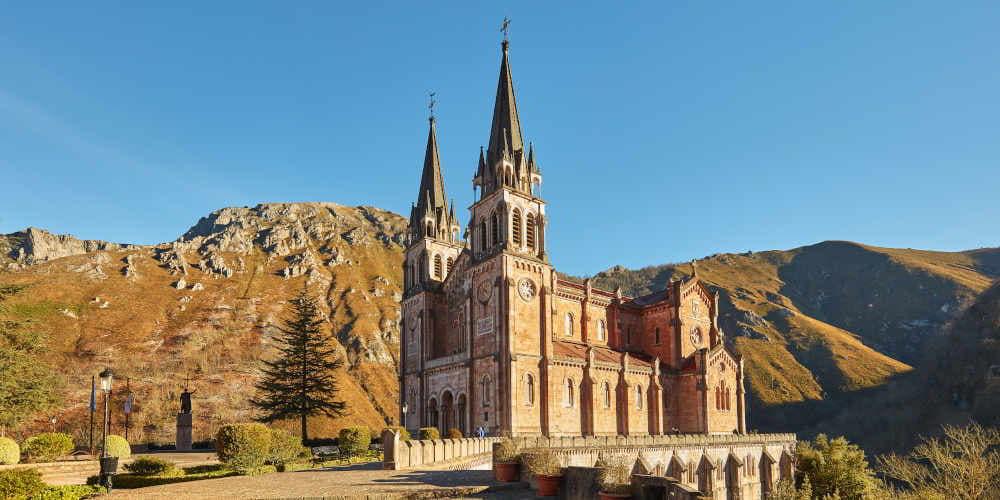
Cangas de Onís was the first capital of the Kingdom of Asturias. Favila, the second king of the lineage, ordered a church to be built here - the current Hermitage of the Holy Cross -to guard the oak cross that his father Pelayo raised against the Arabs. Anyone who wants to know more about this can visit the Aula del Reino de Asturias in Cangas itself. We must also stop in front of the "Roman" bridge, which actually dates from the High Middle Ages (probably the 13th century). Its iconic figure, with its sharp central arch and hanging cross, has become one of the most recognisable symbols of Asturias.
Seaside villages
There was a time when places like Ribadesella/Ribeseya, Llanes or Bustio were not destinations for getaways or selfies, but coastal bastions that had to close ranks against English pirates or Napoleonic troops that appeared in the Bay of Biscay with little tourist intentions. They were, at that time, fishing ports, trading and subsistence ports, humble shipyards and a refuge for sailors, as well as a departure point for brigantines that were going to "make the Americas". Today, these villages have been converted into temples of good living. Ribadesella / Ribeseya opens onto its wide estuary with beautiful promenades, such as the one that leads up to the Ermita de Guía, one of the most beautiful panoramic views in Spain. Llanes is more intimate, with a tower and medieval walls, with streets winding around its secluded fishing port and marina. Bustio is a discreet village, nestled in a beautiful bend of the Tina Mayor estuary - the natural border between Asturias and Cantabria. The Coastal Way to Santiago (Camino del Norte), the Asturian Jacobean route declared a World Heritage Site in 2015, currently passes through these villages and numerous other coastal enclaves.
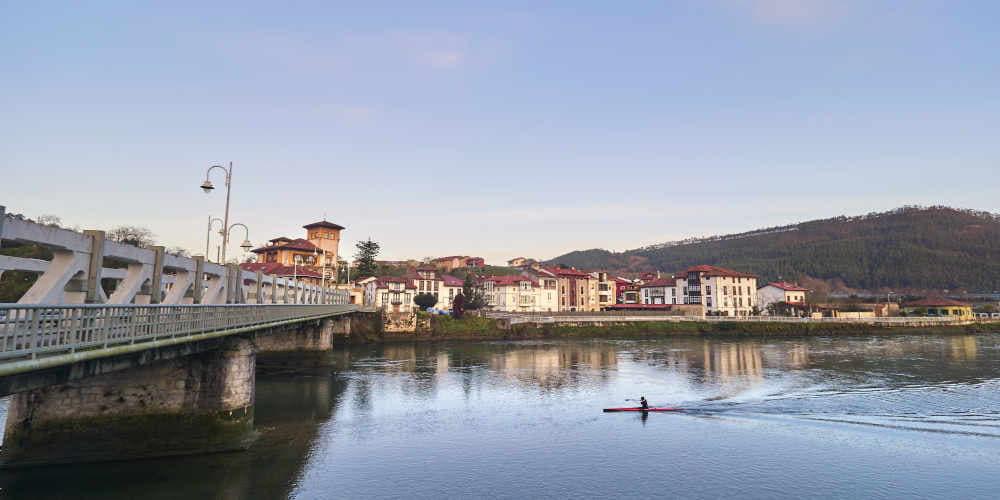
Towns, villages, Indian legacy
The villages of Eastern Asturias are a way of being in this world: the vegetable garden is cultivated, the stable is tended, everything smells of wood, of old smoke, of our grandparents' childhood. Time is measured in scything mowings and pilgrimages, and this, for the modern spirit, is a kind of shock, something almost revolutionary. We can learn more about this culture in the Ethnographic Museum of Eastern Asturias (Porrúa, Llanes), or in villages such as Espinaréu (Piloña), which offers us a splendid peasant architecture, with its constellation of hórreos (granaries) scattered throughout the caleyas, the praos and the solanas. And this is no exception. Piloña, a territory prodigal in villages, proudly preserves more than 700 hórreos (raised granaries) and some 200 paneras, those more spacious relatives of the hórreo, typical of times of abundance.
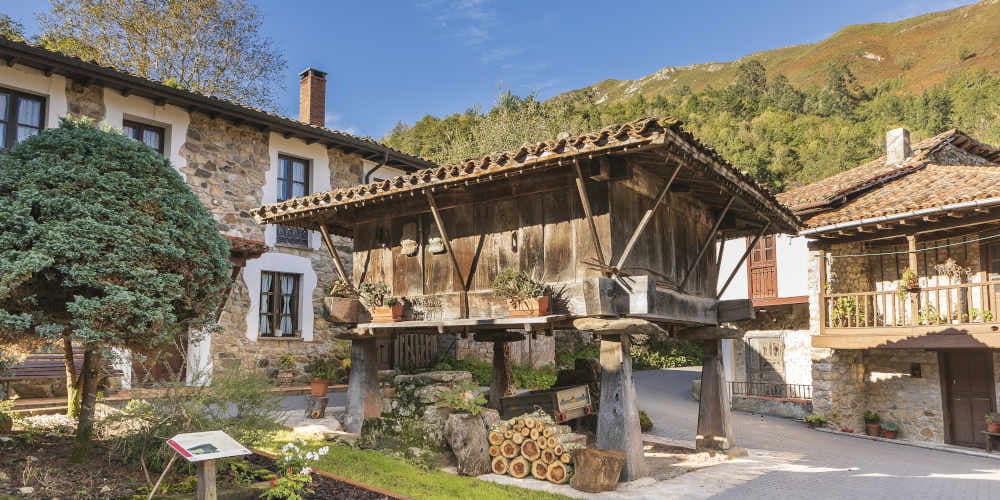
During the last part of the 19th century and the beginning of the 20th century, many Asturians emigrated in order to avoid starvation and to prosper. Some succeeded, others did not, but they all maintained the umbilical cord with their native village. Iñigo Noriega Laso, a native of the village of Colombres, in Ribadedeva, made his fortune in Mexico and on his return built the impressive "Quinta Guadalupe", a large Indiano mansion, the current home of the Emigration Museum. Indianos Archive Foundation. One leaves this space with the certainty that America cannot be understood without those men who adapted to the tropics with the same dexterity with which they tamed an ox-drawn cart in the "tierrina". The "Indiano mansions" are dotted all over eastern Asturias without distinction, although they shine brightly in Colombres itself, in the town of Llanes or on the Ribadesella/Ribeseya beach promenade.
Gastronomy
By the sea, what were once salting cellars or old canneries are now cider houses and restaurants where fish and seafood from the fish market is worshipped. The sea no longer comes in the form of a threat, but as a dish. Freshly caught sea bass, bonito landed from the coast, tasty anchovies, hake on the skewer... starting with octopus, clams, sea urchins, crab and barnacles. Inland there are good cheeses, such as Vidiago, Pría, Beyos or Peñamellera. Cabrales cheese is undoubtedly the pharaoh. It is a cheese that is not only consumed in unctuous wedges, but is also present in numerous preparations. It is held in Arenas de Cabrales on the last Sunday in August. Gamonéu is the king of the sheepfolds in the mountainous municipality of Onís and also in the municipality of Cangas de Onís. Like Cabrales, Gamonéu is cured in natural caves (although it is first smoked in the huts), has a Protected Designation of Origin and has a contest in Benia de Onís, at the end of October.
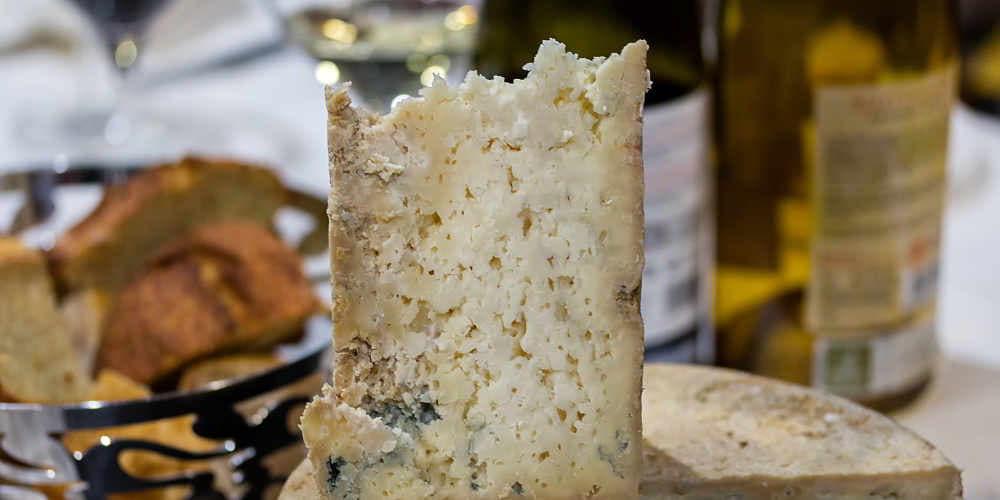
In the Ardisana Valley (Llanes), magical beans are grown: verdinas, exquisite when accompanied by seafood or game meat. Asturian Beef PGI is on show at one of the most important livestock fairs in northern Spain, the Corao fair (Cangas de Onís), held every 26 May, with an abundance of home-bred cows and Asturiana de los Valles. Every weekend in February you can enjoy the most rural cuisine at the Amieva and Alto Sella Slaughtering Gastronomic Days. In November there is the Chestnut and Garden Products Fair in Arriondas/Les Arriondes, in the municipality of Parres. On the first Sunday in October, the Hazelnut Festival is held in Infiesto/L'Infiestu (Piloña). Apart from all this, every Sunday of the year without exception we can stock up on the best products from the East at the most popular market in the region: the Mercau de Cangas de Onís.
Parties
There is no month without festivities, nor festivities without bagpipes. Folkloric displays always accompany the most important days. Llanes leads the way in religious celebrations thanks to the bands or brotherhoods that maintain a very combative rivalry to carry out the best processions, the most perfect dances (prima dances, pericotes or xiringüelos) or the biggest "joguera" (eucalyptus trunks planted by the young men of the village in the "prau" or site of the fiesta). La Magdalena, San Roque and La Guía are the most popular summer events in the capital of Llanis. But there is a fiesta with a folkloric display in every village in the municipality and in many other places in the Oriente, such as San Antonio (June, Cangas de Onís), La Fiesta del Bollu (July, Arriondas/Les Arriondes, Parres), San Cipriano (September, Panes, Peñamellera Baja), la Virgen de la Salud (September, Carreña de Cabrales) and a long etcetera.
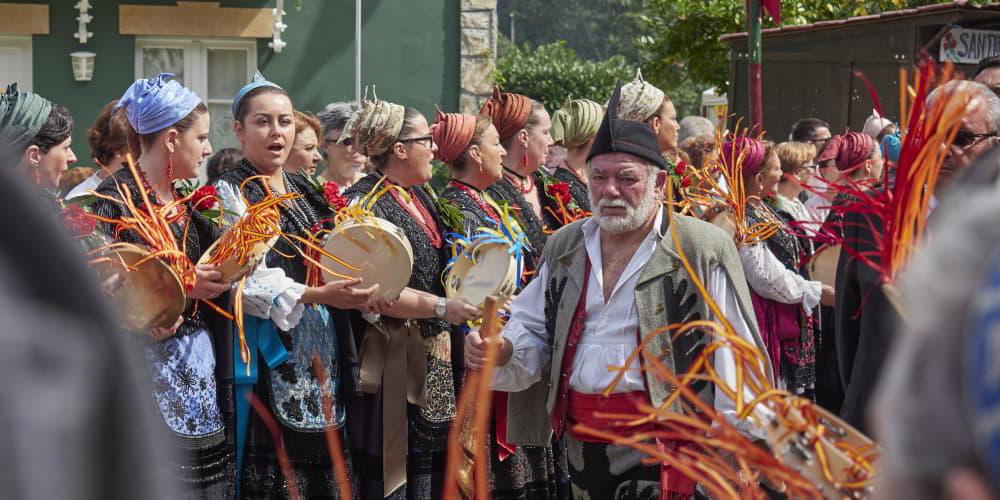
But as well as religious festivals, in the east of Asturias there are other types of manifestations that are expressed without the need for an altar or procession. Festivals born of the landscape and history, such as the Feria de Indianos in Colombres, a way of honouring all those who were forced to emigrate, a festive and nostalgic day in which an entire village dresses up in period costume. The ladies open and fold their parasols, the gentlemen take off and put on their hats. On 25 July, the shepherds of the Picos de Europa are honoured in style in the Vega de Enol: The Shepherd's Festival. Another pastoral event is the Asturcón Festival, at the end of August in the Majada de Espineres in the heart of the Sueve mountain range, a day that serves to strengthen the bond between the Asturian people and their native horse with branding, dressage, picnics, bagpipes and plenty of cider. The Guirria is a mythological hooded man who, on New Year's Day, walks the paths of San Juan de Beleño (Ponga) courting the young women, with a retinue that follows him on horseback. A masked version along the lines of the Antroxu (carnival), celebrated throughout the region with a great deployment of means. Last but not least is the International Descent of the Sella, the first Saturday in August between Arriondas/Les Arriondes and Ribadesella/Ribeseya. Undoubtedly, the festival of the Asturian summer and the only celebration in the Principality declared of International Tourist Interest. A sporting event that turns into a river festival and mass competition. Apart from the canoeists, everyone is a great display of energy: running, dancing, jumping, singing... as long as the body can take it.
Activities and nature in Eastern Asturias
Eastern Asturias needs no photographic retouching or views devised with Artificial Intelligence; it unfolds its geography with an almost deliberate harmony through landscapes in crescendo: from the beaches and cliffs overlooking the Bay of Biscay, through the coastal rasa to the valleys and mid-mountain ranges, and from here to the highest peaks of the Picos de Europa National Park.
Coastal landscape
More than 40 sandy areas, including beaches and coves, dot the coastline of this region. Vast and extensive beaches of over a kilometre in length, such as Vega (Ribadesella), La Espasa (Caravia) or San Antolín (Llanes) compete for bathers and surfers with other medium-sized beaches such as Franca (Ribadedeva) or Arenal de Morís (Caravia). A distinction can be made between wild and untamed beaches, such as those of Torimbia or Andrín (Llanes) and others of an urban nature, such as Santa Marina in Riosella. But it is not only about beaches. This coastline is an open-air geological laboratory, and a large part of it is made up of rocky coves and boulders that are home to a very rich ecosystem and some natural pools. The so-called Jurassic Coast, between Ribadesella and Gijón, suddenly breaks off at the Arra rocky outcrop to give way to the Llanes cliffs, geologically more recent and also "higher" formations.
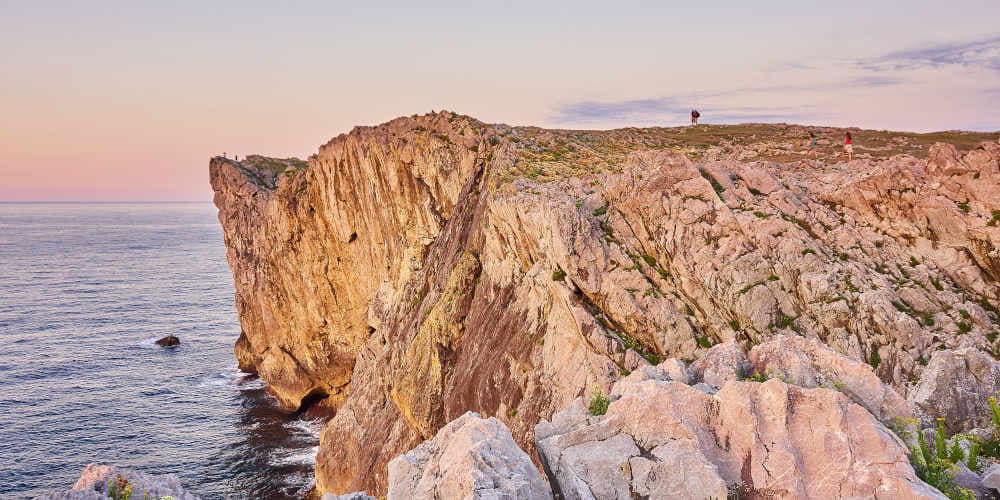
And it is on this high coast where you can enjoy one of the most sensitive spectacles of the Cantabrian Sea: the bufones de Pría or those of Arenillas, surprising waterfalls that emerge from the depths, through natural cracks and chimneys, causing a fearsome "bufido" that reaches its full splendour in winter storms. The Coastal Path of Llanes or the Cliffs of Hell ( Ribadesella) are well prepared routes for hikers or cycling enthusiasts. We will come across unusual inland beaches in the middle of nature, such as the one at Gulpiyuri or the Cobijeru Natural Monument. From different viewpoints we can see inaccessible coves, cliffs and islets. There are also sport fishing and scuba diving enthusiasts, jet skis, boats for hire or kayaks that go into the caves at the base of the cliffs.
Cordillera
The orography of this region has coastal mountain ranges that are Protected Landscape, such as the Sierra del Cuera and the Sierra del Sueve. In the latter, from the Mirador del Fitu viewpoint we become fully aware of the East of Asturias, with a view of a large part of its territory. And if we crown the Picu Pienzu (1,161 m), after a rewarding hike from the Fitu, the panoramic view is even more amazing. The Sueve mountain range is a unique ecosystem, with beautiful beech forests such as La Biescona and legendary horses that graze in the wild: the asturcones (small, tough, with thick manes), the Asturian equine lineage. The Sierra del Cuera is a barrier that rises up between the sea and the mountains like a natural fortification. A 12-kilometre-long range with the Turbina Peak ( 1315 m) as its highest peak. Its northern slope falls steeply towards the coast, while the southern slope opens up to the world of Cabrales and the two Peñamelleras, with hiking routes as beautiful as those that lead to the Viango Valley, pass through the Oscuru Valley or start from the village of Asiegu (Cabrales).
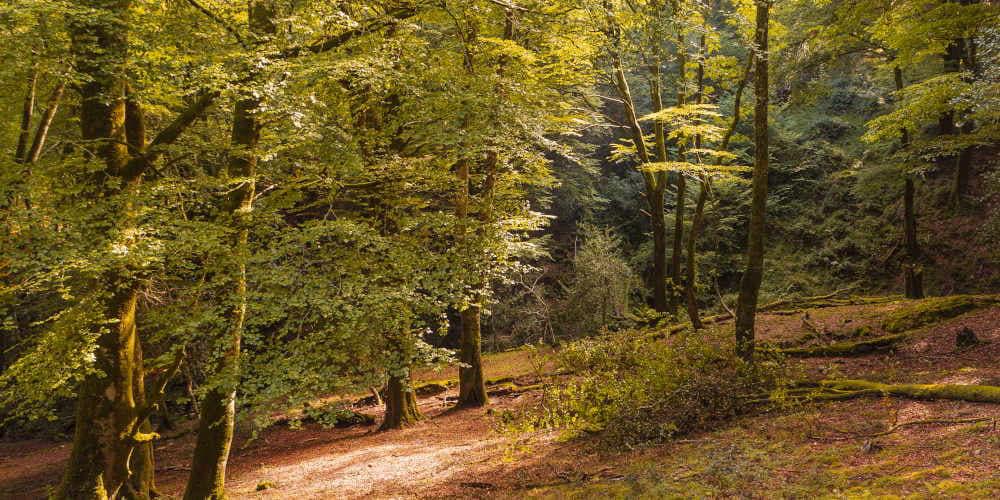
The municipalities of Amieva and Ponga, bordering the Picos de Europa but with their own natural sovereignty, are home to one of the most beautiful mountain ranges in the whole of the Cantabrian: the Ponga Nature Reserve (Biosphere Reserve). More than 200 square kilometres of parkland in which the forest mass of the Peloño beech forest stands out, one of the most important forests in the north of the peninsula (it is worth a good excursion with a good sandwich and a good camera). In the inner course of the river Ponga twists the Beyos gorge, a vertiginous gorge that can be explored by car. Not far from here, in Cangas de Onís, we discover the area around the Dobra river, a tributary of the Sella. An easy hiking route, ideal for children, leads us to the Olla de San Vicente; a large pool of crystalline waters where the river stops to think and where we can perhaps take a "cool" and purifying bath. In the upper stretches of the Sella, as well as watching the salmon jump, it is possible to go rafting. Further down, the most popular river challenge in Spain awaits us: the descent of the Sella.
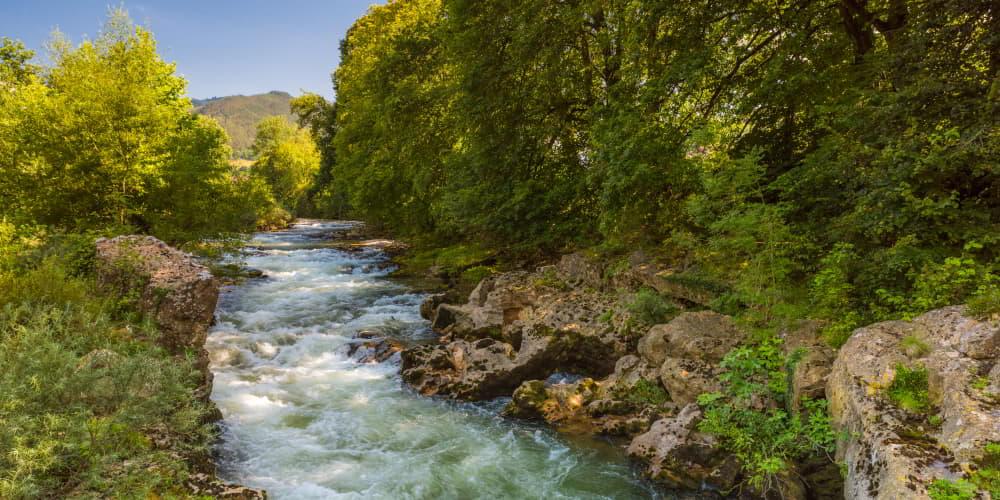
This reference to the mid-mountains would not be complete without mentioning the existence (and beauty) of the sierras of Ques and Peñamayor in Piloña, the balcony of beautiful views that is the Sierra de Santianes and Mount Mofrechu in the lands of Ribadesella, or the existence of good salmon fishing preserves on both the river Sella and the Cares. In the latter, the Niserias preserve, in the beautiful surroundings of Peñamellera Alta, has always stood out.
Picos de Europa
Eastern Asturias is home to a large part of the Picos de Europa National Park, the first protected area in Spain. It has always been inhabited by shepherds, cheese makers, hikers, mountaineers, chamois and legends. In the western massif: El Cornión, we find the Enol and Ercina, the famous Covadonga Lakes, legendary cycling summit and climax of the national landscape. The omnipresent Peña Santa ( 2596 m) dominates an endless number of pastoral routes that are (re)used for trekking, such as those leading to Vega de Ario or Vega Redonda, on the way to the spectacular Ordiales viewpoint. In the central massif: Los Urrieles, lies the limestone monarchy of Asturias. The highest point in Asturias and the Cantabrian Mountains is here: Torre Cerredo ( 2,649 m). So is one of the cradles of Spanish mountaineering: the Naranjo de Bulnes, whose first name, as it was christened by the shepherds, is "Picu Urriellu". Its iconic, vertical shape, standing out from the ground like a finger pointing to the sky, is a real challenge to climb it. The village of Bulnes is not far from its orange tree. Nestled in a narrow high mountain valley that seems to have been made on purpose to hide it from everything. Until a few decades ago it was only accessible on foot, going up the Canal del Texu. Since 2001, there is a funicular railway that leaves from Poncebos and reaches Bulnes itself thanks to a route that crosses the mountain. But it is good to remember here that going to Bulnes is not tourism but a break from the noise of the world (it is better to walk up to make this a reality).
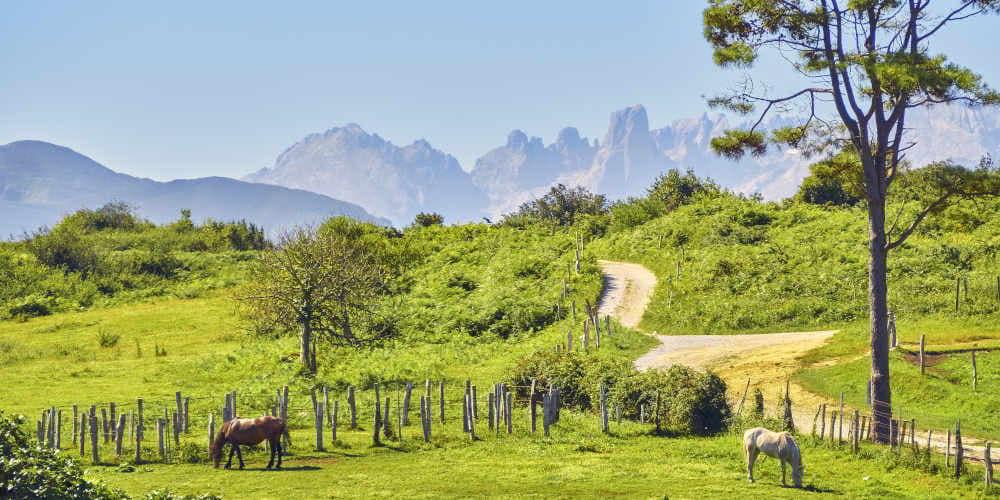
The well-known Cares Route, an inimitable path between two lands -Caín (León) and Poncebos (Asturias)- is a tamed precipice of more than 12 kilometres where silence also echoes. This route is rightly known as "the divine gorge", because if the gods decided to incarnate themselves as hikers they would choose this gorge to know what it feels like.
Walking through the Picos and their foothills, it is not long before you come across the majadas (mayadas), high-altitude villages where you can graze your livestock during the summer. They abound in the area around villages such as Tielve and Sotres (Cabrales), as well as in the area of the lakes and throughout the council of Onís. They are responsible for the excellent culinary results of cheeses such as Cabrales or Gamonéu.
Eastern Asturias is generous in any season, but in terms of landscape, its greatest splendour is in spring and autumn. Spring multiplies its colour with apple trees in blossom and all the groves in bloom. Autumn, with its chromatic melancholy, is the ideal time for those in search of beauty without bustle or to walk through the woods. It is also the ideal time for the growing community of surfers who choose the Principality at this time of year because the waves are livelier than in summer. September is particularly good for mountain lovers. The heat is less intense and the days are still long and bright. Winter, although harsher, has the virtue of showing the soul of the East without the tourist make-up. It is the ideal season to admire the snowy landscapes or to see great natural spectacles such as the llaniscos bufones.
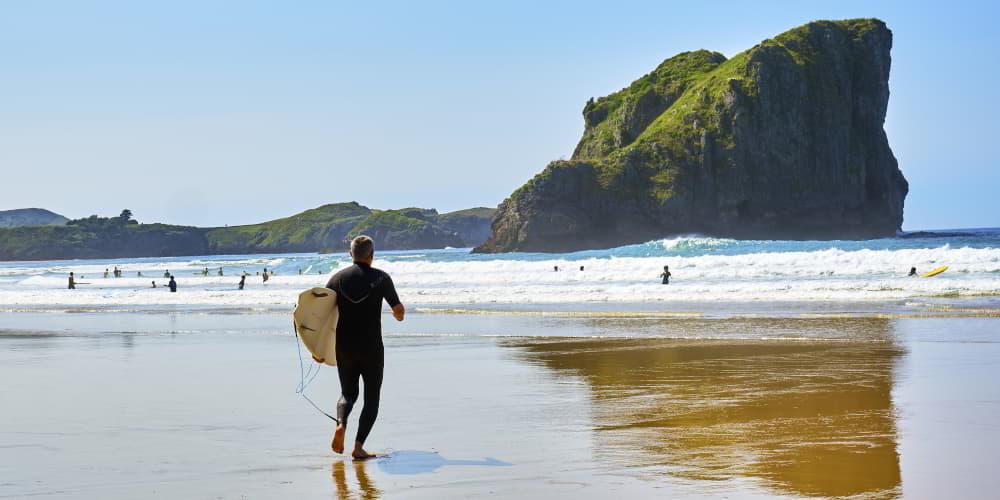
Winter is also a particularly good time to eat hot, to give another twist to slow food and try all those dishes of yesteryear born in the slow heat of smoky kitchens, when the slaughter of the pig was a subsistence ritual. Soups, fabadas and pots to savour every spoonful without haste, tortos with minced meat or boronas, those uninhibited loaves made with corn flour, baked slowly, wrapped in cabbage or chestnut leaves and stuffed with chorizo and bacon.
As far as full enjoyment is concerned, it has to be admitted that summer is the best season. The "voladores" (flying birds) are everywhere, cider is flowing in abundance at the "prau" festivals and there is good cheer and people everywhere. For the more active, the east of Asturias offers a catalogue of possibilities that would make any tropical travel agency go pale. We can go canoeing, horse riding, jet skiing, quad biking, cycling, coasteering in the rocky areas, climbing, canyoning, caving, renting a boat, diving and, of course, swimming in the many wild beaches.
In this region we must quickly get used to what it used to mean to "walk without a watch". It wouldn't be bad either to put the mobile phone aside, and focus on watching the sunset in a good beach bar without getting the saltpetre off our skin. We could also challenge ourselves to get up early to see the sunrise from the Mirador del Fitu (i-n-o-l-v-i-d-a-b-l-e).
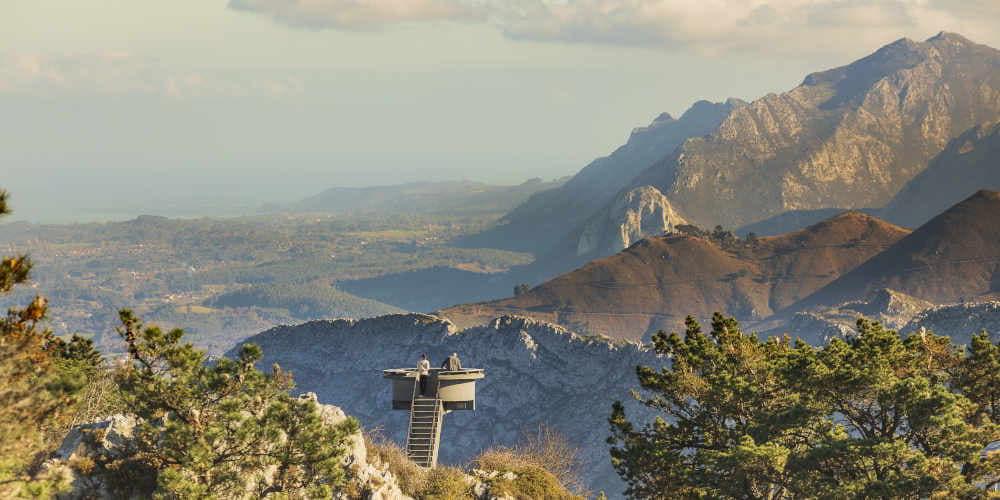
Fundamental: don't just look for the "must-sees". Talk to the locals and find out what you're missing. If you let yourself get carried away you may even get infected by the local way of speaking; get used to saying "esto ye muy prestosu" instead of "what a great time I'm having".
The road network in eastern Asturias is reasonably good, although some destinations are more accessible than others. There is a FEVE railway line and regular bus services, although the best way to get around the area is still by car or hire. The main entrances to the region are from central Asturias via the Cantabrian motorway (A-8) and by the same route from Cantabria.
As for accommodation, there is something for every type of traveller: rural houses for families or groups, charming hotels, comfortable flats, and campsites with renovated facilities.
There are tourist offices in the main towns, specialised heritage guides, numerous adventure and active tourism agencies, off-road routes, the possibility of organising sea trips, and a large network of quality restaurants and cider bars.
It is advisable to book in advance in high season, especially if you want to stay in the most sought-after places or eat in places where everyone wants to eat.
After returning from the Oriente de Asturias, something in you will have changed substantially. There is no need to go to the other side of the world.
Images
Map
What to see
- Top 10 things to see and do in Cabrales.
- Top 10 things to see and do in Llanes.
- Top 10 things to see and do in Ribadesella and surroundings.
- Top 10 things to see and do in Piloña.
- Royal Site of Covadonga and the Lakes of Covadonga, Enol and Ercina.
- Caves of Tito Bustillo and El Pindal.
- Town of Ribadesella/Ribeseya.
- Town of Llanes.
- Asiegu and Bulnes.
- Ponga Natural Park, Peloño Forest.

